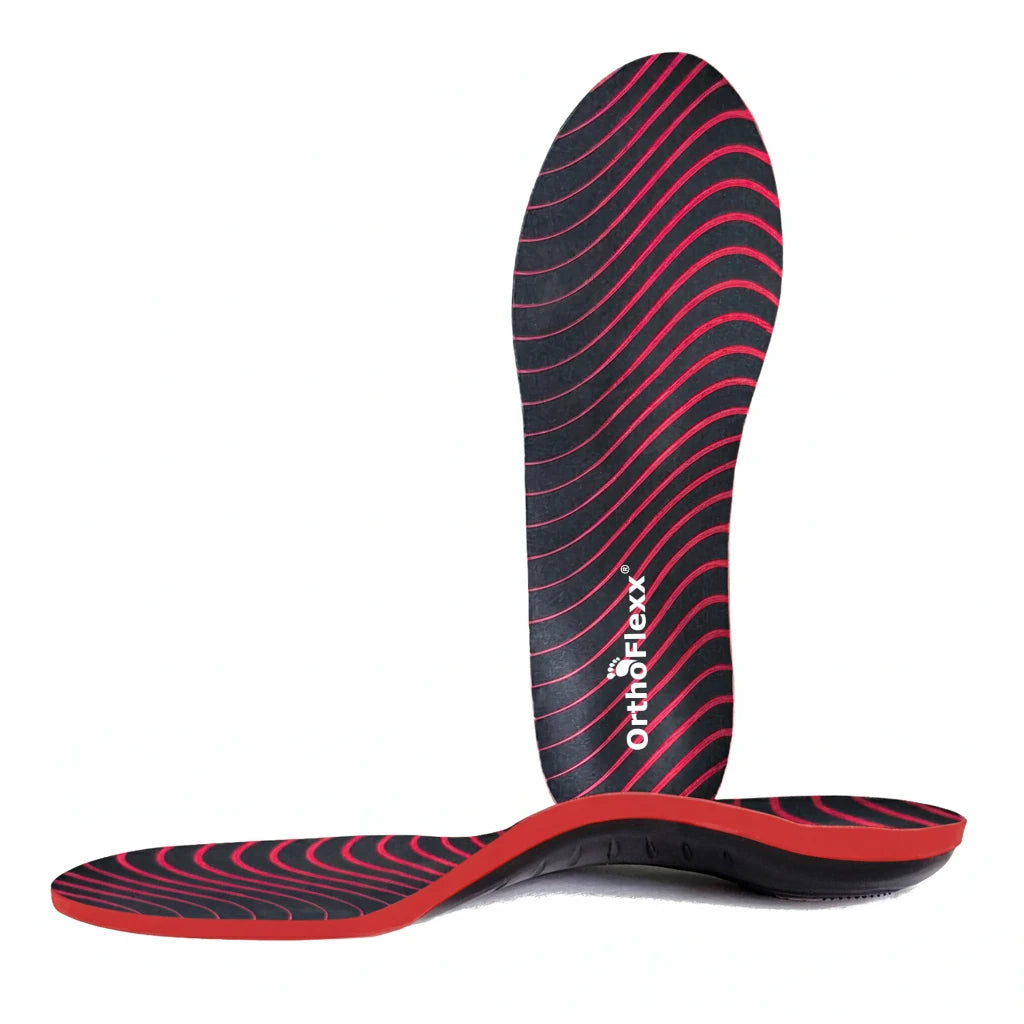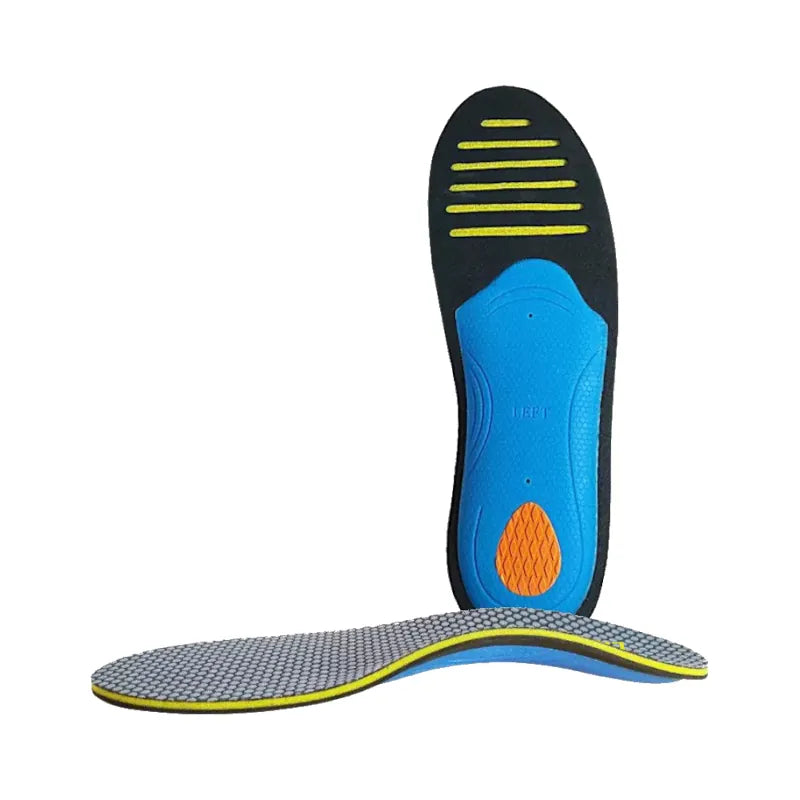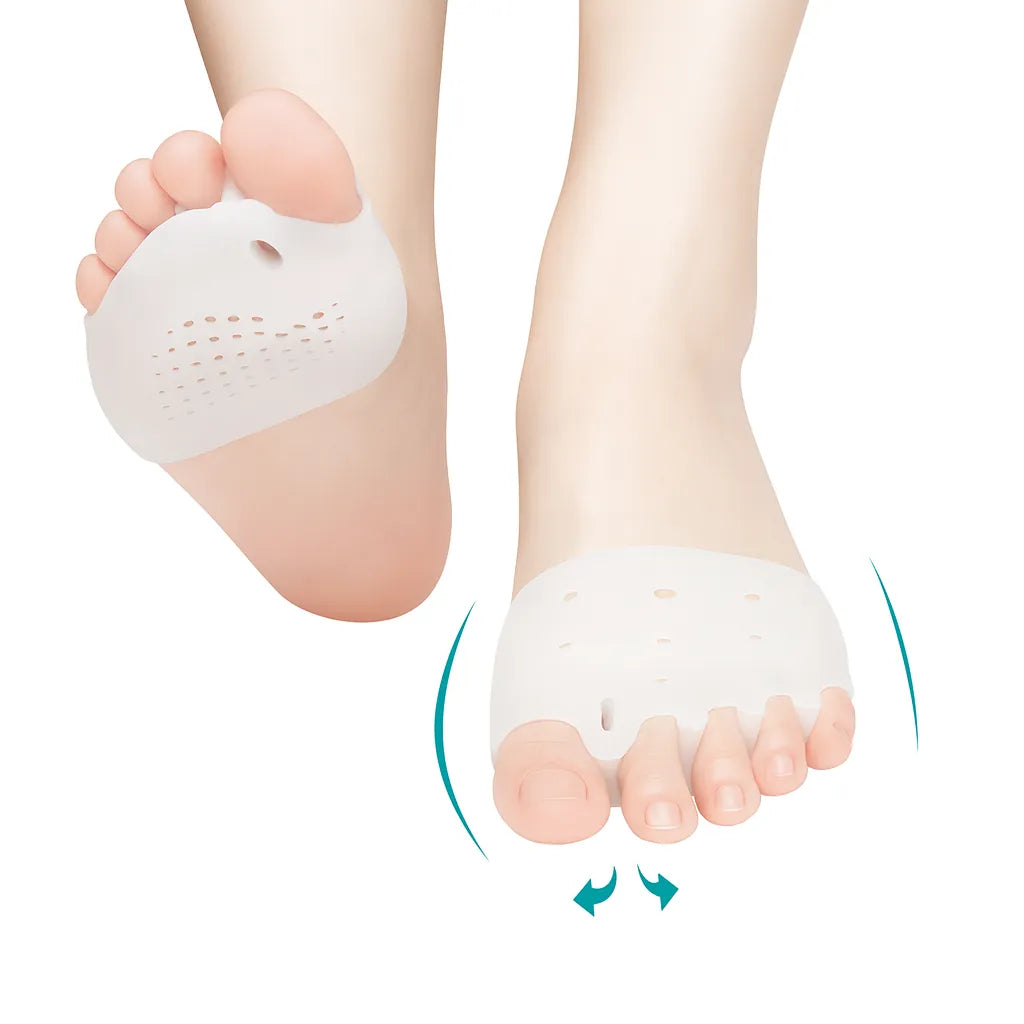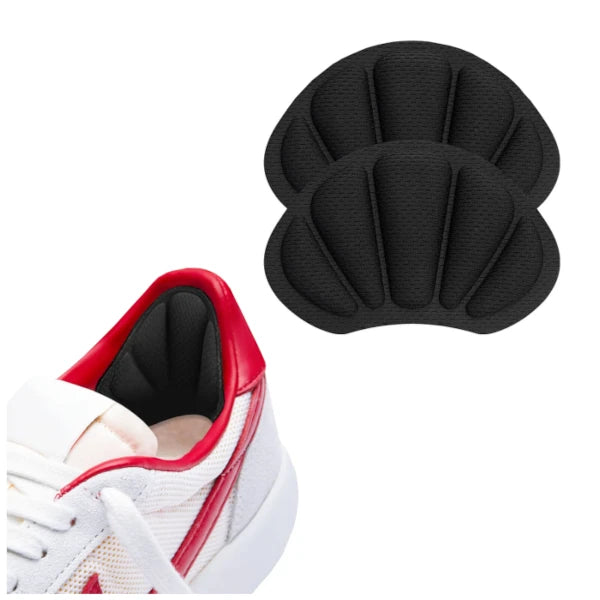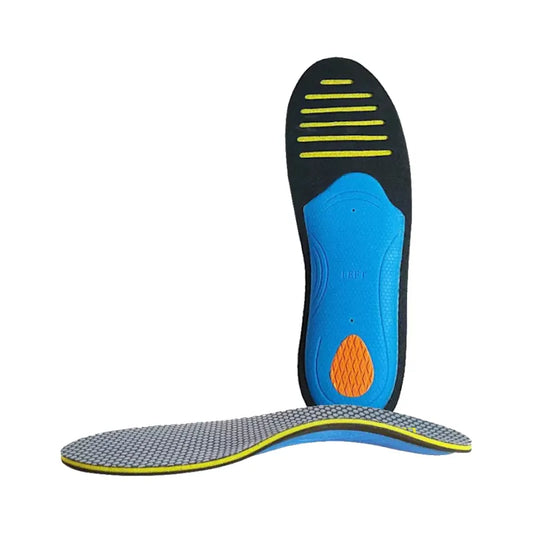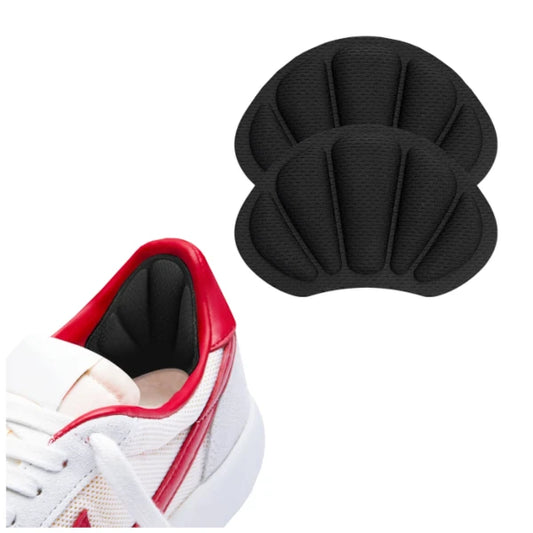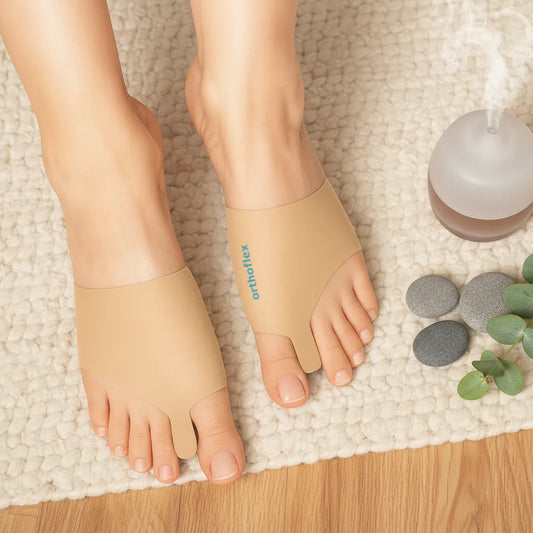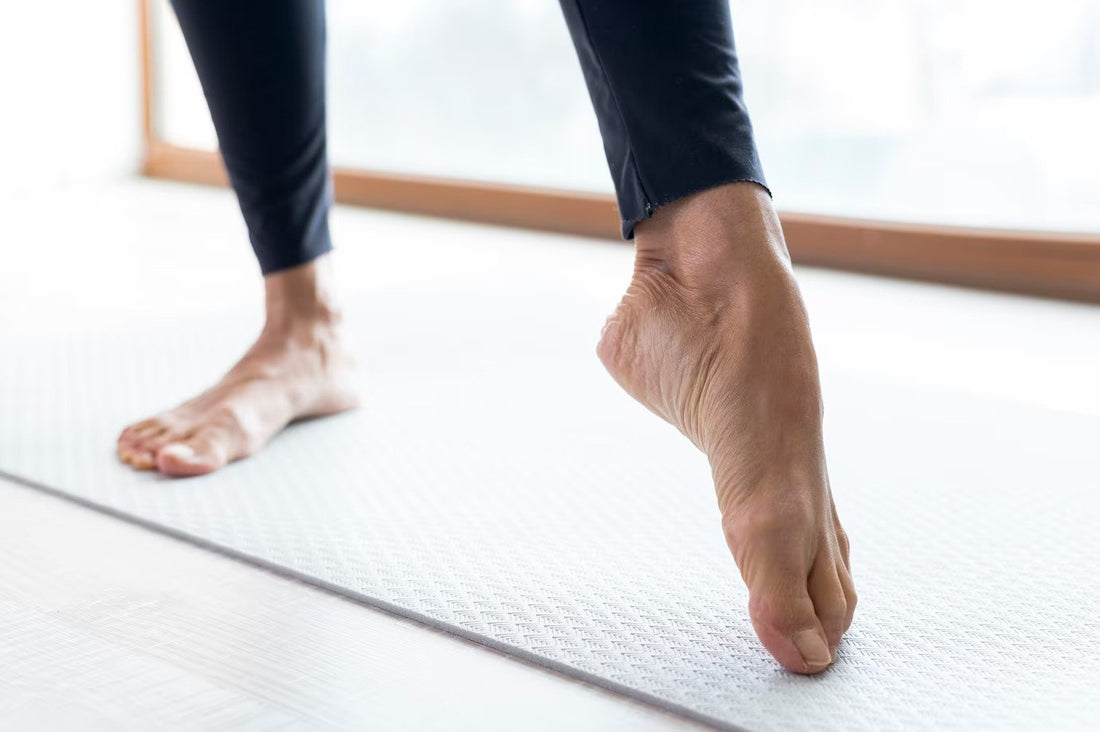
Overlapping Toes: Causes and Solutions
Share
Introduction
Overlapping toes, a foot condition that may initially appear innocuous or purely aesthetic, often go unnoticed and unattended. This condition can manifest as one toe laying on top of another, affecting any digit but most commonly appearing in the fifth toe or the second toe. It may present at birth, or develop progressively over time due to a multitude of factors that we will explore in this comprehensive guide.
This foot deformity is not just a visual irregularity. Left untreated, it can lead to significant discomfort, pain, and even affect a person's mobility. The effects of overlapping toes can amplify under pressure, such as during prolonged standing or walking, leading to an array of complications like corns or calluses due to the constant friction between toes. Hence, it is a condition that requires more attention and awareness, given its potential impact on an individual's functionality and quality of life.
This article seeks to unpack the complexity of overlapping toes, shedding light on its causes and the demographics it affects most. We will delve into the various treatment options available, from non-invasive solutions to surgical interventions, providing a holistic understanding of how this condition can be managed. Additionally, we will explore prevention strategies to equip readers with knowledge on how to maintain optimal foot health.

As we embark on this in-depth journey, our goal is to provide a broad yet detailed perspective on overlapping toes, empowering readers to make informed decisions regarding their foot health. Whether you are currently dealing with overlapping toes, know someone who is, or is simply seeking to expand your knowledge on foot health, this article is for you. Let's step into the world of overlapping toes, one foot at a time.
Understanding Overlapping Toes
Overlapping toes is a condition characterized by one toe laying on top of its adjacent counterpart. This deviation can occur in any toe, but it is often observed in the fifth (little) toe or the second toe. The manifestation of overlapping toes can be congenital, appearing at birth, or develop over time due to a variety of reasons, which will be addressed later in this article.
While the condition might seem benign at first, untreated overlapping toes can lead to painful corns or calluses due to the constant friction between toes. These complications often become evident during prolonged standing or walking, leading to discomfort or pain.
Who's More Prone to Overlapping Toes?
Genetic Predisposition - Individuals who inherit certain foot shapes may be more prone to overlapping toes. Evidence shows that this condition often runs in families, indicating a strong genetic factor.
Age - The likelihood of developing overlapping toes increases with age. As people age, they may experience muscle weakness and balance issues, leading to a change in foot shape and alignment.
Gender Influence - Women tend to experience overlapping toes more frequently than men. This disparity is often attributed to the choice of footwear, with high heels and shoes with narrow-toe boxes being more common in women's fashion.
Medical Conditions - Certain health conditions like rheumatoid arthritis, bunions, or neuromuscular diseases can affect the foot's shape or function, increasing the risk of overlapping toes.
Causes of Overlapping Toes
The exact causes of overlapping toes often vary between individuals and are typically a combination of several factors, such as:
Footwear - Ill-fitting shoes that are too narrow, tight, or high-heeled can compress the toes, forcing them into unnatural positions and potentially leading to overlapping toes.
Foot Trauma - Injuries, fractures, or surgeries can alter the structure of the foot, contributing to the development of overlapping toes.
Muscle Imbalances - An imbalance between the foot's muscles can pull the toes out of alignment, contributing to their overlapping.
Neurological Issues - Certain neurological disorders like peripheral neuropathy or Charcot-Marie-Tooth disease can lead to various foot deformities, including this one.
Solutions for Overlapping Toes
Treating overlapping toes requires a combination of professional medical intervention and at-home care, with the goal being to reduce pain, correct the alignment of the toes, and improve overall foot health. The treatments can be broadly categorized into non-surgical and surgical options, each with various methods and techniques.
Non-Surgical Treatments - Non-surgical treatments are typically the first line of action, especially when the condition is diagnosed early, or if it's causing mild discomfort. These interventions focus on pain relief, realignment of the toes, and prevention of further progression.
Orthotic Devices and Padding - These are specialized shoe inserts designed to correct biomechanical foot issues, improve comfort, and reduce pressure on sensitive areas of the foot. Toe separators can be used to gently encourage the toes back into their natural position and alleviate pain. Pads can be applied to areas where corns or calluses have developed due to the overlapping toes, reducing friction and pressure.
Footwear Modifications - This involves choosing footwear that offers ample space for the toes and supports the foot's arch. Shoes should have a wide toe box and low heels to reduce pressure on the toes. In certain cases, customized shoes may be recommended by a podiatrist or orthopedist.
Physical Therapy - Physical therapy exercises are recommended to strengthen the muscles in the foot, improve flexibility, and promote better foot and toe alignment. These exercises could include towel curls (curling a towel towards you using only your toes) or marble pickups (picking up marbles using your toes).
Medications - Over-the-counter pain relievers and anti-inflammatory drugs may be recommended to alleviate pain and reduce inflammation. In the case of corns and calluses, medicated pads or creams might be suggested.
Surgical Treatments - If non-surgical treatments are ineffective, or if the condition is causing severe pain and affecting mobility, surgical intervention may be considered. The type of surgery largely depends on the severity of the condition and the individual's overall health. We’ll give you some examples of the procedures:
Tenotomy - This procedure involves cutting or lengthening the tendons to allow the toe to lie flat. This procedure is often carried out in conjunction with other surgical procedures to correct the alignment of the toes.
Arthroplasty - This involves the removal of a small section of the joint to allow the toe to straighten. It is commonly performed when the toe joint is rigid or fixed.
Arthrodesis - In more severe cases, arthrodesis may be performed, which involves fusing the bones of the joint together. This procedure provides stability and corrects the position of the toe but at the cost of joint mobility.
Osteotomy - This surgical procedure involves cutting or removing part of the bone to correct its alignment. It is often used in conjunction with other surgical procedures to provide the best outcome.
The treatment for overlapping toes varies greatly depending on the individual's specific circumstances, and a healthcare provider is the best source to recommend the most effective treatment. It's essential to remember that early detection and intervention can prevent the progression of the condition and the need for more invasive treatments. Therefore, any changes in your foot health should prompt a visit to a healthcare professional.
Preventing Overlapping Toes
Preventing overlapping toes often involves making lifestyle changes:
Proper Footwear - Choose shoes that provide enough room for your toes to move and breathe. Shoes with wide-toe boxes and low heels are the best options.
Foot Strengthening - Engaging in regular foot exercises can help maintain proper toe alignment, foot strength, and overall foot health.
Early Treatment - If any signs of overlapping toes are noticed, it's essential to seek medical attention promptly. Early intervention can often prevent the condition from progressing.
Regular Check-ups - Regular foot examinations, especially for those with diabetes or other conditions affecting foot health, are crucial for the early detection and treatment of any abnormalities.
Conclusion
While overlapping toes may seem like a minor issue, if left untreated, it can greatly impact an individual's quality of life. Gaining a better understanding of the condition, its risk factors, causes, and potential treatments can empower individuals to take control of their foot health. Remember that early detection and prevention are always better than cure. For any changes in your foot health, it's always advisable to consult a healthcare professional. By adopting preventative measures and healthy foot care habits, you can steer clear of this foot deformity and stride towards a pain-free and active life.
Author Bio

Marlene Carvalho
Certified Sports Physiotherapist of Elite and Olympic athletes; Performance Coach to racing drivers
Marlene Carvalho is a sports physiotherapist passionate about all things sports.
References
- Hattori, Y. (2021). "Treatment of overlapping fifth toe deformity: A systematic review." Journal of Orthopaedic Surgery and Research, 16, 41.
- Piqué-Vidal, C., & Solé, M. T. (2007). "Overlapping fifth toe: A congenital deformity associated with a supernumerary phalanx and treatable by surgery." Journal of Pediatric Orthopaedics Part B, 16(6), 409–412.
- Kumar, V., & Clough, T. M. (2005). "Overlapping fifth toe: A review of 14 cases treated by skin plasty and arthroplasty." Foot and Ankle Surgery, 11(1), 29-31.
- Reed, S. C. (2011). "Congenital overlapping fifth toe: Long-term followup of surgical correction." Foot & Ankle Specialist, 4(3), 169–174.
- Myerson, M. S. & Jung, H. G. (2005). "The role for operative correction of bunionette deformity." Foot and Ankle Clinics, 10(3), 525-38.
